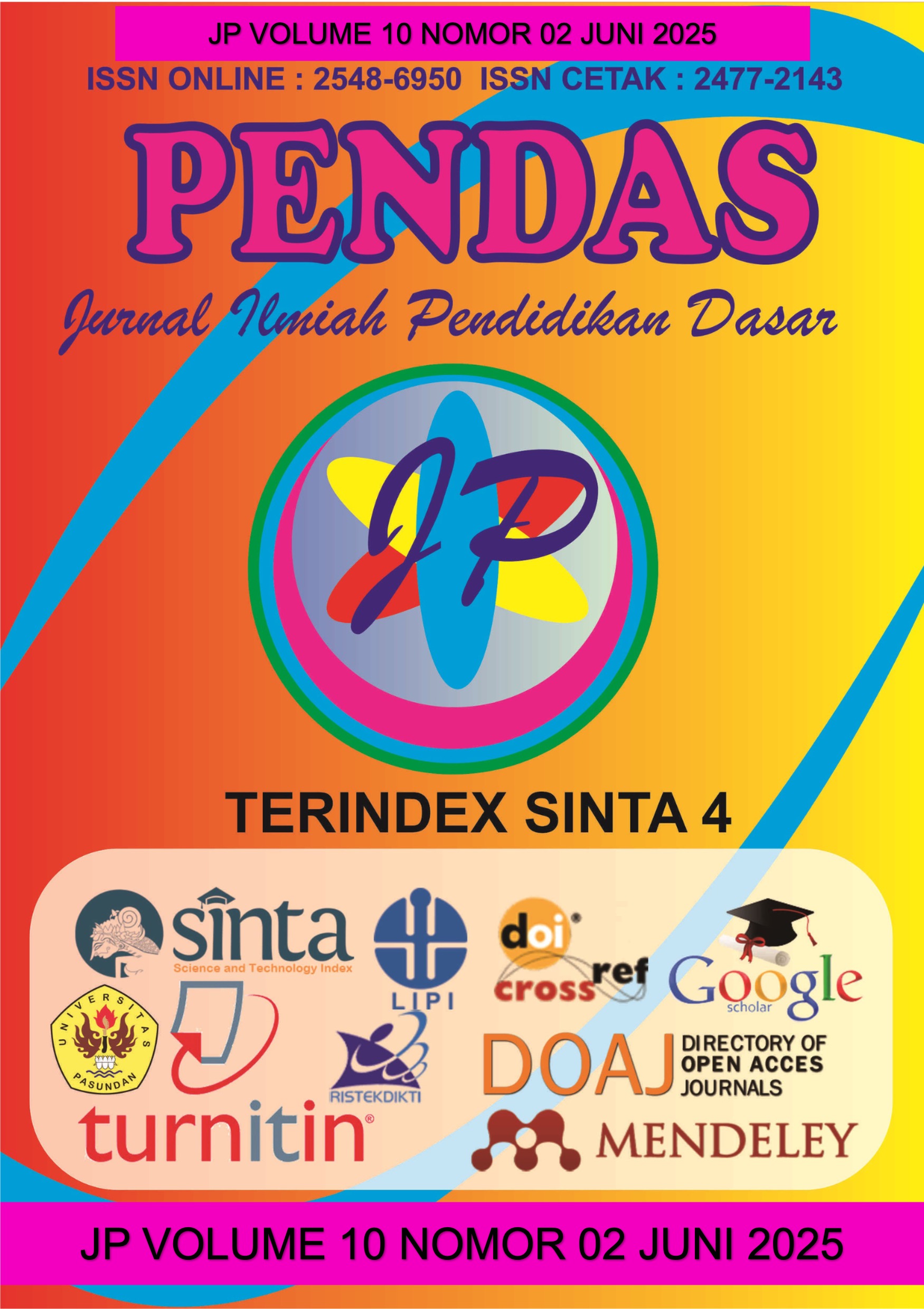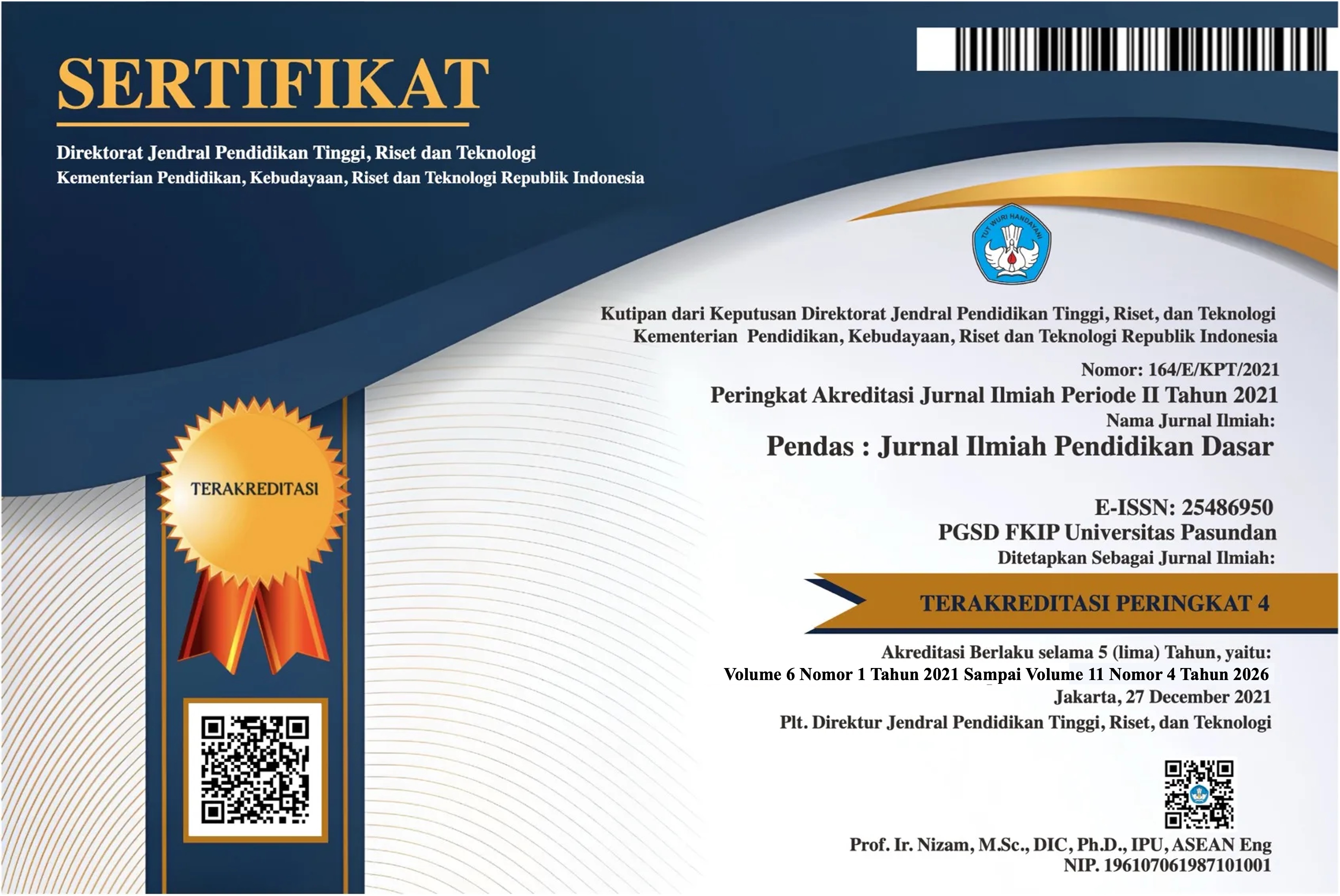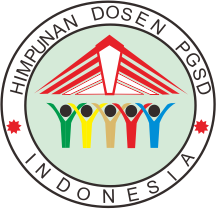HUBUNGAN KEMAMPUAN BERPIKIR KRITIS DAN KEMAMPUAN BERPIKIR KREATIF PADA PELAJARAN IPAS SISWA SD
DOI:
https://doi.org/10.23969/jp.v10i02.27490Keywords:
21st Century Skills, Critical Thinking, Creative ThinkingAbstract
Critical thinking skills and creative thinking skills are essential competencies in the
21st century. There is a growing perspective that these two thinking skills can be
developed simultaneously. Therefore, this study aims to determine the relationship
between critical thinking skills and creative thinking skills in the IPAS (Science,
Environment, Technology, and Society) subject among elementary school students.
This research uses a quantitative method with a correlational approach and employs
tests as the data collection technique. The test instruments are divided into two
types: a two-tier multiple-choice test to measure critical thinking skills, which was
developed based on four indicators—focus, reason, inference, and situation; and an
essay test to measure creative thinking skills, with indicators including fluency,
elaboration, flexibility, and originality. The population of this study consists of all
sixth-grade students at SD Negeri 1 Jambu Ilir, with one class totaling 34 students.
The correlation test results indicate a relationship between critical thinking skills and
creative thinking skills. The regression coefficient result shows a value of 0.551,
indicating that critical thinking skills influence 55% of creative thinking skills.
Downloads
References
Salomo, L. F., Busnawir, Rahayu, R.,
& Rizki, A. (2020). Kemampuan
Berpikir Tingkat Rendah (LOTS)
VS Kemampuan Berpikir Tingkat
Tinggi (HOTS) (Kodri (ed.); 1st
ed.).
Jurnal :
Azka, M. Z., Sri, T., & Asih, N. (2024).
Kemampuan Berpikir Kritis Siswa
Model Problem Based Learning
dengan Asesmen Dinamis
Berpendekatan Pembelajaran
Berdiferensiasi Ditinjau dari
Kemandirian Belajar. Jurnal
Cendekia : Jurnal Pendidikan
Matematika, 08(June), 1259–
1272.
Mayarni, M., & Yulianti, Y. (2020).
Hubungan antara Kemampuan
Berpikir Kritis dengan
Kemampuan Berpikir Kreatif
Siswa pada Materi Ekologi.
PENDIPA Journal of Science
Education, 4(3), 39–45.
https://doi.org/10.33369/pendipa.
4.3.39-45
Rahardhian, A. (2022). Kajian
Kemampuan Berpikir Kritis
(Critical Thinking Skill) Dari
Sudut Pandang Filsafat. Jurnal
Filsafat Indonesia, 5(2), 87–94.
https://doi.org/10.23887/jfi.v5i2.4
2092
Rahmawati, H., Pujiastuti, P., &
Cahyaningtyas, A. P. (2023).
Kategorisasi Kemampuan
Berpikir Kritis Siswa Kelas Empat
Sekolah Dasar di SD se-Gugus II
Kapanewon Playen , Gunung
Kidul Categorization of Critical
Thinking Skills of Fourth-Grade
Elementary School Students in
Cluster II Subdistrict Playen ,
Gunung Kidul. Jurnal Pendidikan
Dan Kebudayaan, 8, 88–104.
https://doi.org/10.24832/jpnk.v8i1
.3338
Resti, S., & Nugraha, F. R. (2018).
Keterampilan 4C Abad 21 Dalam
Pembelajaran Pendidikan Dasar.
Jurnal Tarbiyah Al-Awlad, VIII
Edisi, 112–122.
https://doi.org/10.1016/j.jacc.202
0.04.015
Salomo, L. F., Busnawir, Rahayu, R.,
& Rizki, A. (2020). Kemampuan
Berpikir Tingkat Rendah (LOTS)
VS Kemampuan Berpikir Tingkat
Tinggi (HOTS) (Kodri (ed.); 1st
ed.).
Samura, A. ode. (2019). Kemampuan
Berpikir Kritis dan Kreatif
Matematis Melalui Pembelajaran
Berbasis Masalah. Journal of
Mathematics and Science, 5(1),
20–28.
Hodgson, J., & Weil, J.
(2011). Commentary: how
individual and profession-level
factors influence discussion of
disability in prenatal genetic
counseling. Journal of
Genetic Counseling, 1-3.
Fariq, A. (2011). Perkembangan dunia
konseling memasuki era
grobalisasi. Pedagogi, II Nov
2011(Universitas Negeri Padang),
255-262.
Downloads
Published
Issue
Section
License
Copyright (c) 2025 Pendas : Jurnal Ilmiah Pendidikan Dasar

This work is licensed under a Creative Commons Attribution 4.0 International License.



















